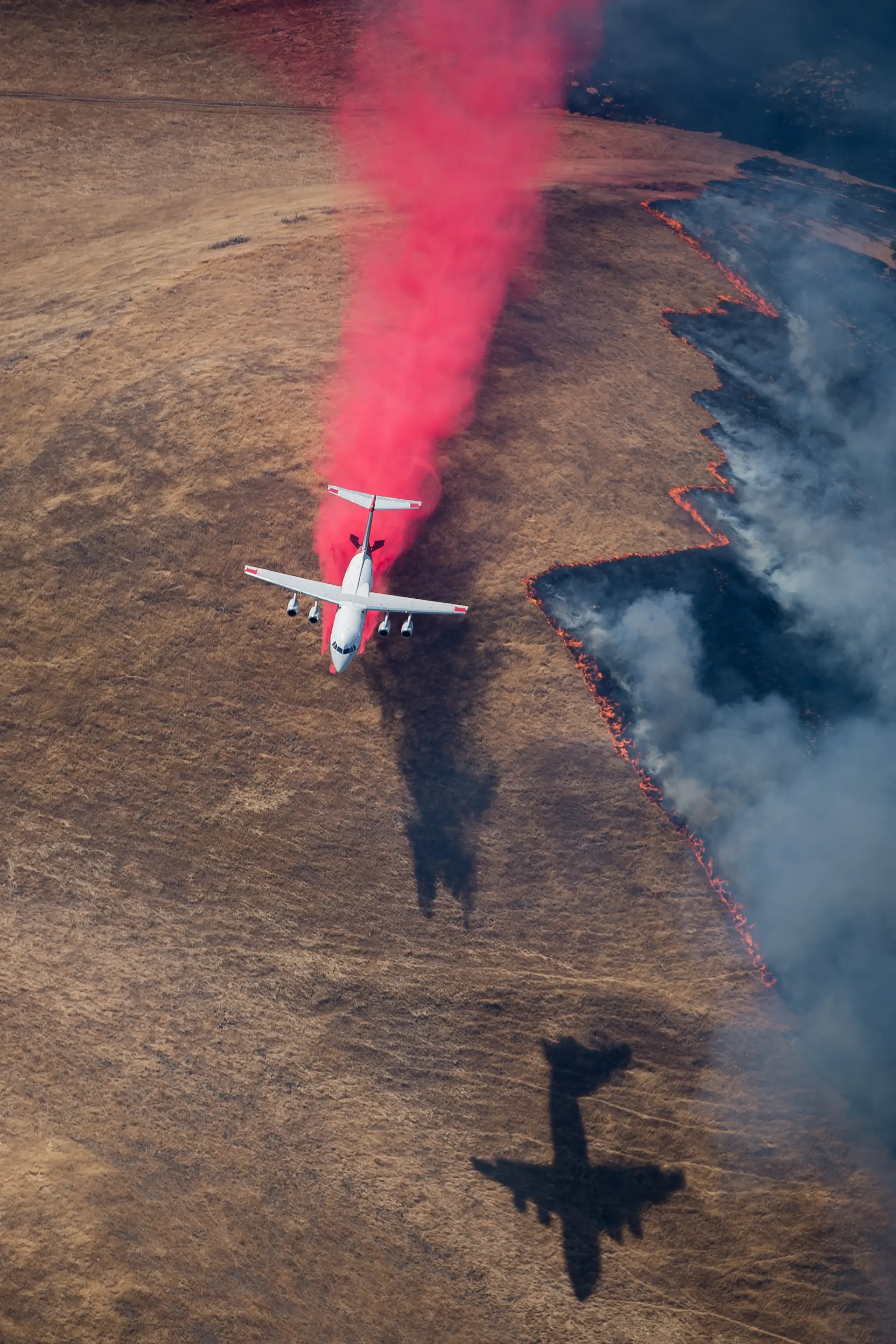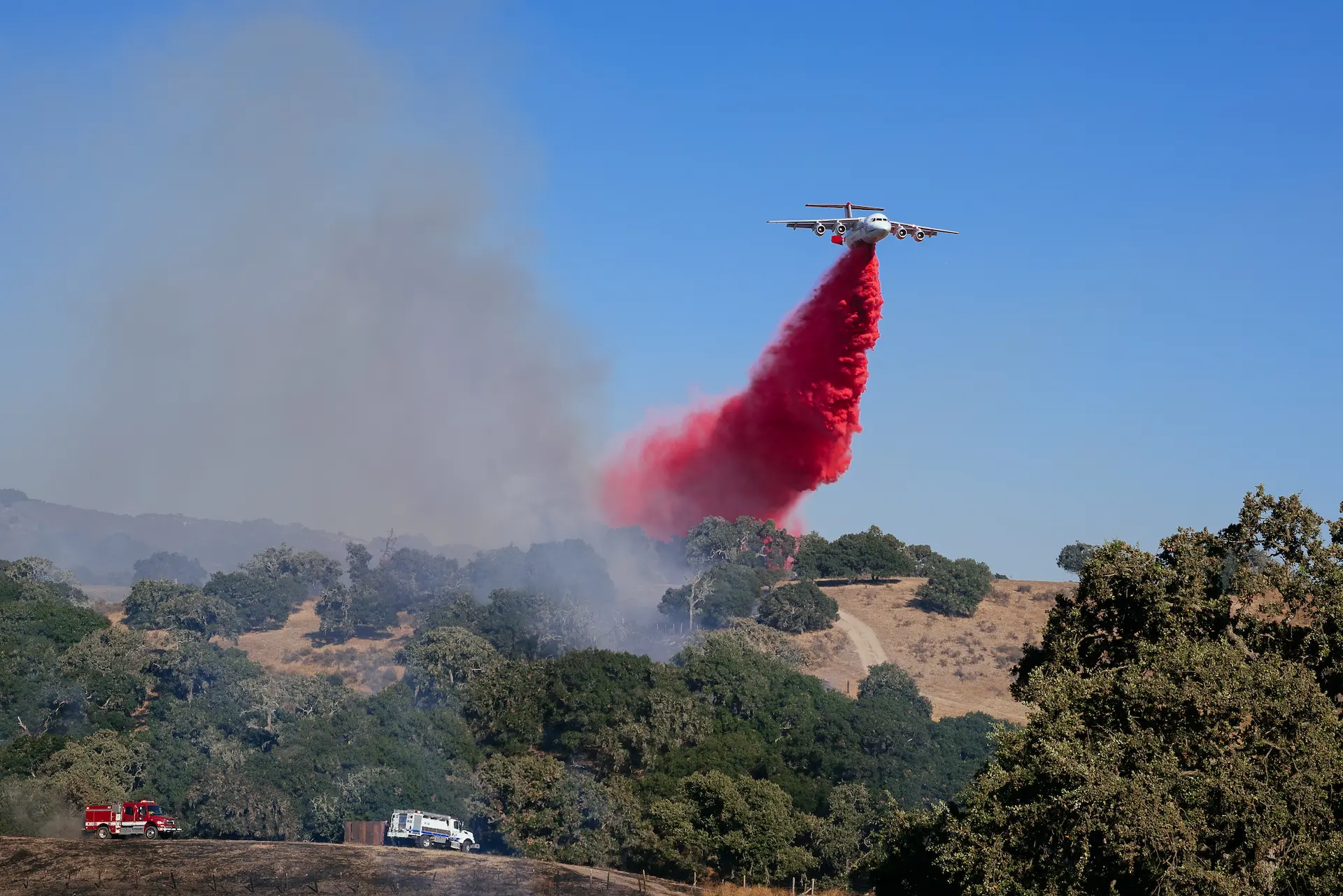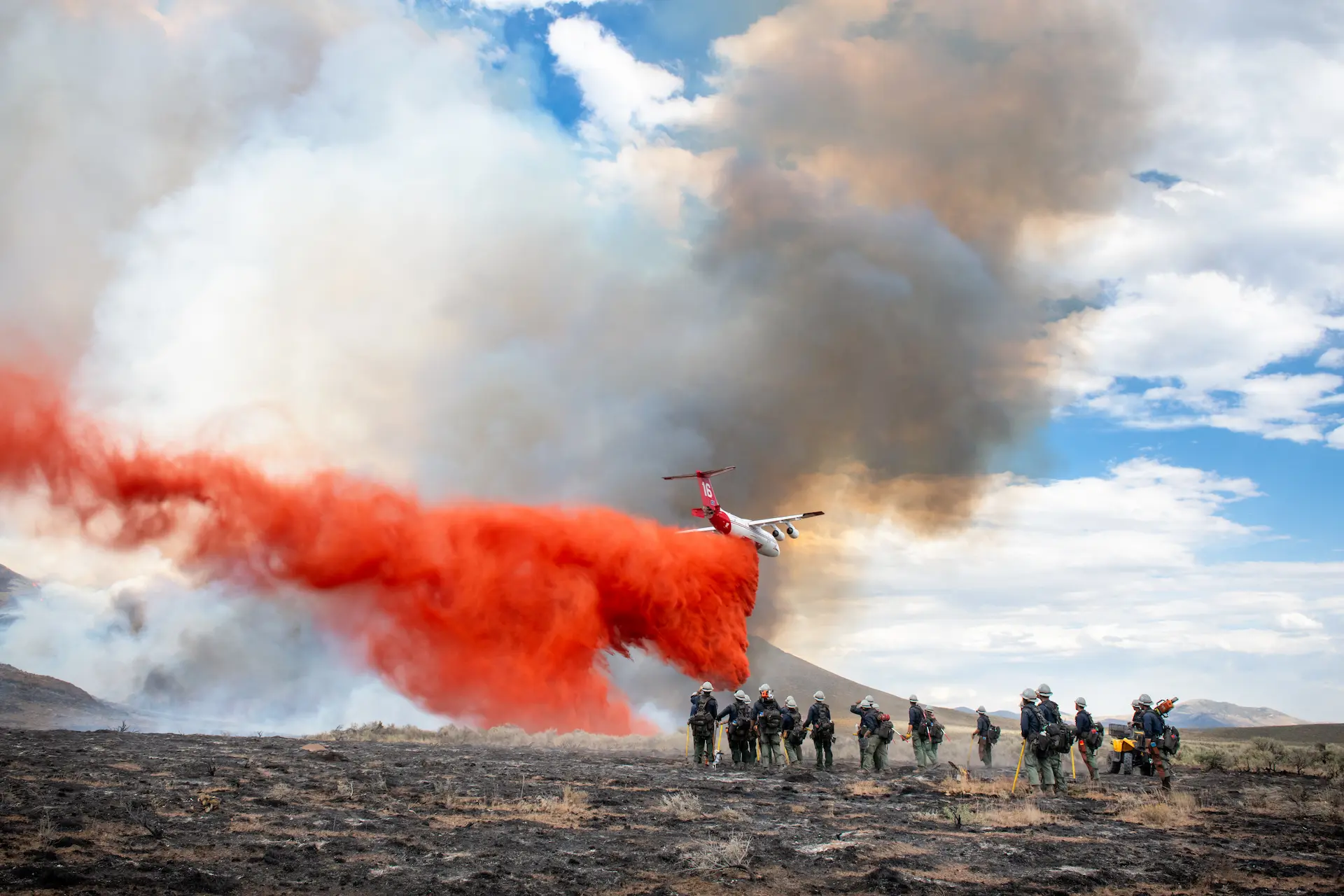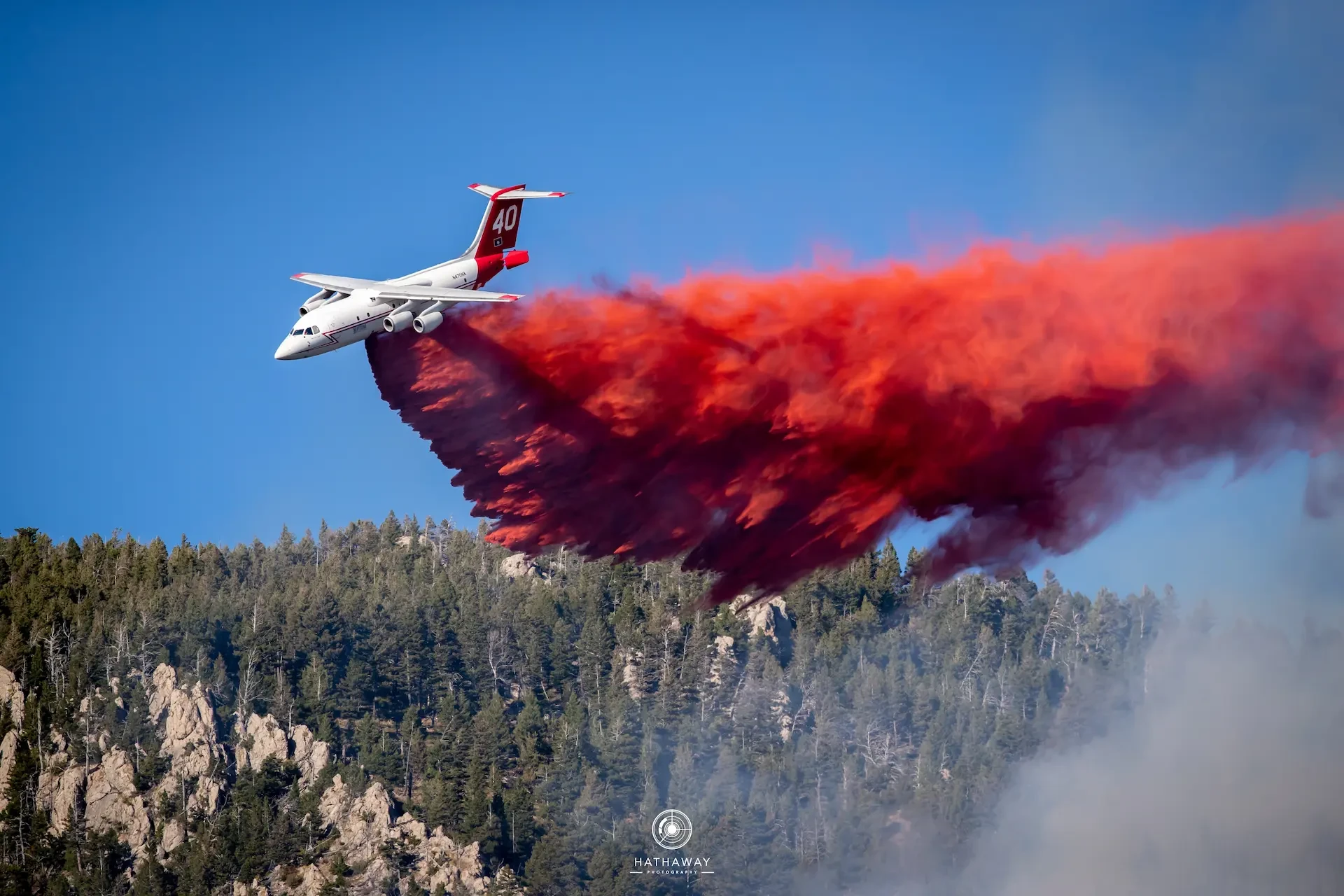Neptune Aviation Services looks beyond its long time North American aerial firefighting market, as the US-based air tanker operator secures standing offer contracts with two Australian states. To service those contracts, Nicholas (Nic) Lynn, Neptune’s Vice-President, Operations, discusses the company’s fleet of BAe 146 jets, repurposed for fire retardant dropping, as well as field support of the aircraft formerly operated in commercial passenger service.
As climate change continues to drive increasingly destructive fire seasons, globally, aerial firefighting companies are responding to calls for assistance beyond their home countries. Neptune Aviation Services, a US-based air tanker operator, is among the most recent, having secured Standing Offer contracts with the New South Wales Rural Fire Service, and the Queensland Fire and Emergency Services in Australia. These contracts run through to 2024.
“The complementary nature of fire seasons between the Northern and Southern hemispheres means there is an opportunity to utilize our assets nearly year-round, to aid wherever we are needed to combat and manage wildfires,” explained Nicholas (Nic) Lynn, Neptune’s Vice-President, Operations.

Repurposing BAe 146 Airliners As Next Generation Tankers
Headquartered in the US State of Montana, Neptune’s aerial firefighting operations are totally fixed-wing, with a current fleet of nine British Aerospace (now BAE Systems) BAe 146 jets. The high wing jets, powered by four Honeywell ALF 502 engines, were formerly operated in short-haul regional airline service. As Lynn reported, the BAe 146 enabled Neptune to retire the last of its former US Navy, Cold War Era, Lockheed-built P2V Neptunes—from which the company gets its name—in 2017.
“We looked at several airframes—from Boeing 727s and 737s, as well as smaller aircraft - in the years leading up to choosing the BAe 146,” Lynn noted. In the end, the 146 checked the most boxes for us, given its robust structural design, load-carrying capability, excellent low-speed maneuverability and stability, high cruise speed, and OEM support. The aircraft is built very well, and has required minimal structural changes to transition the aircraft to the fire-fighting environment.” He added that Neptune has an extensive structural health monitoring system installed in all its aircraft, and the data is regularly evaluated to improve its inspection program.
Lynn reported that at the outset of the conversion program, Neptune partnered with Tronos Jet, an aircraft modification specialist based in Prince Edward Island, Canada. Tronos Jet, said Lynn, performed for Neptune what would be the world’s first firefighting conversion of a BAe 146. While Neptune partnered with Tronos Jet to refine the system, it ultimately took over ownership and final design of the tanking system installed on the BAe 146 fleet. In that regard, Lynn pointed out that Neptune became involved with the engineering and design of the tanking system in 2010 and received approval from the US Air Tanker Board for the current configuration in 2013.

No Easy Task
The modification of an aircraft type which was never purpose-built as an air tanker was not without its challenges, as Lynn pointed out.
“Any modification of this size has it’s challenges, from integrating existing aircraft systems, to the placement of the structural modifications necessary for the system to function properly,” he said. “For example, once the design and integration elements were worked out, the biggest installation challenge was the installation of the tanking system structure.”
Neptune’s retardant tanks have a capacity of 11,356 liters, and are fully contained within the fuselage. As Lynn pointed out, what complicated matters was the fact that, as former passenger aircraft, the BAe 146s did not come equipped with a cabin-level cargo door. As a result, the entire tank had to be manufactured outside of the aircraft, fit together on fixtures that replicate the aircraft structure, and then disassembled to fit through the main passenger cabin door before being reassembled inside the aircraft.
Another major challenge, said Lynn, occurred when Neptune took over the design from Tronos Jet. That involved adding valves for the retardant dispensing forward of the landing gear to provide better flow during downhill drops. Other modifications involved small changes, including the installation of a glare shield, a tank retardant quantity indicator, and a redesign of the air inlet valve seals.
“We also added an FM radio for tactical communications, and we installed a feature that suspends the aural ground proximity warning system (GPWS) warning while we are performing the drop,” Lynn stated. “The GPWS alerts during the actual drop can become a distraction since we spend a lot of time below the tops of the hills while fighting a fire. We evaluate the terrain and our exit from the drop area before we get down to the lower levels to ensure that we have a safe entry and exit.”
Neptune is also in the process of installing Garmin GNS 750 navigation/communication systems on its BAe 146 fleet, with three aircraft completed to date, and two more scheduled during the upcoming winter maintenance season. “The Garmin units offer better reliability, intuitive user interface, and other standard features that provide better navigation features for our operations,” Lynn said.

Transocean Modifications
In anticipation of the long ferry flight to Australia, Neptune developed a long-range fuel capability modification that includes bladders, installed in the fuselage, for additional fuel, along with pumps and hoses to transfer the fuel from the bladder into the aircraft's—as built—wing fuel tanks. “The modification allows the BAe 146 to take a more direct route to Australia,” said Lynn.
The auxiliary fuel kit is designed as a removable system, and will be installed at Neptune’s Missoula maintenance hangar, just prior to the aircraft making the flight to Australia, and then removed upon arrival. “But, there are certain portions of the installation that remain with the aircraft,” Lynn remarked. “We have currently modified one aircraft for quick retrofit of the auxiliary system, but we can modify others if there is a demand for additional aircraft.”
A UHF radio and SATCOM for the trans-oceanic portions of the flight was also added. Preparations will also include coordinating the flight plan for weather, tech stops for fuel and overnights, visas, and any country-specific COVID requirements.
Neptune, Lynn said, is confident that the BAe 146s track record to date as an air tanker will serve it well in Australia. For starters, self-sufficiency is one of its major selling points, enabling it to operate out of austere locations where no ground power units or air stairs are present. Then there is performance.
Performance
The maximum take-off weight for Neptune’s BAe-146-200A is 42,184kg (93,000lbs). A full load of retardant is 11,356 liters (3,000 gallons), which weighs 27,000 lbs. Asked about the range from a sea level airport on a day with temperatures at 46 degrees (C), Lynn said that would depend on the distance to the fire.
“We can pretty much always take 3000 gallons of retardant, we just offset the amount of fuel on board. Range with full retardant and three hours of fuel is approximately 1000 nm round trip (500 out and 500 back) with loiter time at the fire and required fuel reserves upon landing. Two hours of fuel drops that down to approximately 700nm roundtrip (350 out and 350 back) with the same loiter time at the fire and fuel reserves upon landing.”
He added that the aircraft does very well under short field conditions. “If we maximized our dispatch distance (3000 gallons of retardant and three hours of fuel) we would be at MTOW (93,000lbs) and we would need 7,700 ft. of runway. If we drop down to two hours of fuel, we only need 6,200 ft of runway for those conditions.”
Fuel, said Lynn, will be provided by certified vendors at the various airfields Neptune will operate from. Similarly, he said, the retardant will be supplied by the various Australian State Agencies from the airfields operated from. “Typically, the retardant is mixed as-needed, or an initial amount is mixed and stored in tanks onsite, and then pumped into the aircraft when needed,” he explained.
Lynn reported that while, at this stage, it is hard to anticipate the number of hours or cycles the Neptune BAe 146 will accrue while in Australia, in North America, the typical average is 250 hours and 280 missions--per-aircraft, per-year. “Normally, each mission is slightly less than an hour of flight time, and year after year, the aircraft have had over 99% reliability/dispatch readiness for us,” he remarked. “That is due to our excellent maintenance department both in the field and in the hangar, as well as the superior operation of the aircraft by our flight crews.”
Maintenance Far From Home
In addition to four-to-five pilots per aircraft, for maintenance support at field level, Neptune will send three to four mechanics, and bolster the spare parts and tooling inventory that normally goes with an aircraft for a deployment of this kind. That, according to Lynn, includes a long list of spares such as tires, wheels; brake assemblies, seals, hardware, and tanking system components. Also included are radios, auto-pilot computers, ignitors, generators, and hydraulic pumps
Most maintenance, it is expected, will be done during overnight checks and mainly involve LRU (line replaceable unit) replacements. “We will clear any invasive scheduled inspections before deployment so that all that will remain are standard line maintenance tasks and any unscheduled maintenance that pops up,” said Lynn, adding that Neptune has also been in contact with existing operators of the BAe 146 in Australia and will have support from them readily available, if necessary. “We will also have OEM support.”

Securing Australian Approvals
Neptune, he said, was awarded the Australian contracts, following the tender response process of the National Aerial Firefighting Centre (NAFC), Australia’s central vetting agency for firefighting aircraft on behalf of all the country’s individual states. As Lynn reported, the state authorities notify NAFC of a requirement for an air tanker or other asset, and their contractual specifications. NAFC, then, coordinates the contract language and tender process from notification to evaluation and award. Once a need for additional resources is identified, the agency will reach out to vendors to discuss availability and length of contracts. “NAFC’s air tanker process is very comprehensive, and we were able to provide a plan for mobilization from the US to Australia that met the Australian states’ and NAFC’s needs, which included the requirement for a turbine powered aircraft, and a minimum retardant tank capacity of 11,356.2 liters,” said Lynn.
At the same time, Neptune had to develop and receive approval for an AOC from Australia’s Civil Aviation Safety Authority (CASA). In general, acquiring an Australian AOC, reported Lynn, requires a detailed understanding of Australian aviation regulations, processes, and procedures. All of that, he explained, must be spelled out in an Operations Manual, which must be accepted by CASA. To address Australian operations, Neptune developed a training course for its flight crews and technicians, covering the differences in operation and regulations between the US and Australia. The structure of the training course was incorporated in Neptune’s Operations Manual, which was accepted by CASA.
“In general, the regulations align very well,” Lynn remarked. “However, there are some differences in flight planning, communications, fuel reserves, and a few other areas.”
Among the differences Lynn cited are the Australian regulations requiring a fuel burn log to be completed for each half hour of flight, creating an increased emphasis on fuel management. Additionally, each Australian State utilizes a different radio frequency band for communications with ground firefighters. This, he explained, necessitates the installation of State-specific radios when transitioning from State to State.
The company, Lynn noted, has completed the process of obtaining the AOC, as well as work on any necessary updates.
“CASA has been integral to the process and very helpful in walking us through the certification process,” he said. “We have had multiple video meetings and phone calls with CASA during the process. The final step to complete the process is a physical inspection of one of our aircraft once it arrives in Australia.”
Along this line, Lynn reported that Neptune’s executive team has visited Australia to meet with CASA and NAFC to go over logistics considerations with Neptune’s Australian Director, who resides there. “He was able to provide any technical and support information to our US-based staff to develop operating plans,” he said “As Neptune expands into the global firefighting market, Lynn said that Australia is viewed as a growth opportunity, and integral to the company’s strategic planning.
Under its current Standing Offer contract Neptune is currently committed to provide one aircraft on an as needed basis. As Lynn pointed out, these contracts are similar to Call-When-Needed contracts awarded in the US by the US Forest Service and state firefighting agencies, in which an aircraft is deployed as required. “Although we won’t pre-position an aircraft in Australia, we will respond when one is needed,” said Lynn. “However, we would need approximately three weeks to prepare the aircraft and obtain the permits necessary for the ferry flight to Australia. If we are awarded Exclusive Use contracts that require additional aircraft, we would be able to support that, as well.”
In fact, Lynn remarked that Neptune would prefer to secure longer-term exclusive use contracts in Australia. “While we are grateful for the Standing Offer contracts that have been awarded to Neptune, we hope to have Exclusive Use contracts in the future,” he said. “Exclusive use contracts would better enable us to be fully prepared to support Australian states on a consistent basis.” END

